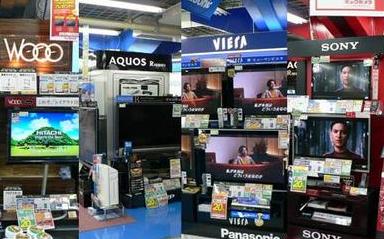 The China Household Electrical Appliances Association anticipates that the development of China's home appliance industry in 2013 will be better than in 2012. The upgrading of industrial structure will be the main theme of the home appliance industry in 2013 and up to now, and technological innovation will become the main driving force for the growth of the home appliance industry in the future. In particular, in recent years, the grades of various categories of products have gradually increased, many emerging products that improve the quality of life have been unveiled, and the upgrading of consumption structures has become more apparent. This will open up new horizons for the future development of the home appliance industry.
The China Household Electrical Appliances Association anticipates that the development of China's home appliance industry in 2013 will be better than in 2012. The upgrading of industrial structure will be the main theme of the home appliance industry in 2013 and up to now, and technological innovation will become the main driving force for the growth of the home appliance industry in the future. In particular, in recent years, the grades of various categories of products have gradually increased, many emerging products that improve the quality of life have been unveiled, and the upgrading of consumption structures has become more apparent. This will open up new horizons for the future development of the home appliance industry. Unfavorable factors affecting the development of the industry The downturn in consumer housing market and consumer overdraft are the main reasons for the decline in the production and sales volume of home appliances in 2012. This factor will continue to play a role in 2013, and the domestic appliance market is still facing a situation of weak demand growth.
Since 2009, various operating indicators of the home appliance industry have grown in an all-round manner. This is mainly due to the government's domestic demand stimulus policy. However, the policy has promoted consumption within a certain period of time, and has also overdrawn part of the future purchasing power.
According to the analysis of relevant statistical data, in 2011, the direct sales generated by the three policies of “Home Appliances Going to the Countrysideâ€, “Old-for-newsâ€, and “Energy Saving Subsidy†accounted for about 70% of the domestic sales. In 2012, the three policies withdrew or weakened, and the market formed a vacuum period. In particular, the policy of home appliances going to the countryside in 2013 was withdrawn in full, and it is expected that this will affect the market in a certain period of time. On the other hand, the superposition effect of many policies forms excessive consumption to some extent, which is particularly evident in the rural market. In 2011, the number of rural household refrigerators per 100 households was 61.5 units, an increase of 16.4 units within a year, and a net increase of 35 units during the four years from 2007 to 2011, greatly exceeding the level of the initial development of the urban market. Market rules tell us that the basic property of household appliances is durable consumer goods. After such concentrated growth, the market needs to digest this increment over the next few years. The impact of consumer overdrafts will undoubtedly continue until 2013.
In addition, the decline in the sales of commercial housing is another important factor affecting the sales of home appliances, especially home appliances, in 2012. Affected by real estate control policies, the sales of commercial residential properties have decreased significantly since October 2011. In the first half of 2012, the sales area of ​​commercial housing has always maintained a negative growth of 2 figures. From January to September 2012, the cumulative sales area of ​​commercial housing fell by 4.3%. As the real estate control policy mainly affects the first-tier cities, the primary and secondary markets for household appliances are also affected, and the level of the three or four-tier market is relatively low.
According to the monitoring data of the National Information Center on home appliance retail markets in 24 key cities across the country, from January to October 2012, the retail sales of all types of major appliances were all negative. Among them, refrigerators, washing machines sales fell 12%, water heater sales fell 18%, air-conditioning sales fell 27%. All kinds of product sales fell.
Although the monthly sales floor area of ​​commercial housing began to rebound in the second half of 2012, and the protection of the housing market in the fourth quarter will also have a positive impact on the market, it is unrealistic for the home appliance market to expect the rapid recovery of the commercial housing market. In 2013, the commodity housing market continued to weaken its role in the home appliance market.
In addition, the recovery of the global economy is sluggish. The political situation and the turmoil in the currency market also affect China's home appliance export market. The deteriorating European debt crisis in 2012 affected the export of Chinese home appliances to the European market. From January to October 2012, the export volume of Chinese home appliances to Spain, the Netherlands, and Italy decreased by 26%, 21%, and 17% year-on-year, respectively, and exported to the core member states of the European Union (Germany, Britain, France, Italy, West, and Netherlands). The volume decreased by 5.5% year-on-year. The overall export volume to the European market decreased by 2.6% year-on-year.
At the same time, the political situation in Iran and Syria also affected the export of Chinese home appliances to the Gulf region. From January to October 2012, the export volume of Chinese home appliances to Iran decreased by 29% year-on-year, and the volume of exports to the United Arab Emirates fell by 3.7% year-on-year.
The turmoil in the global money market and inflation in emerging market countries have also greatly affected Chinese home appliance exports to these countries. From January to October 2012, China’s exports to India increased by only 2% year-on-year, while exports to Brazil increased by only 6.5% year-on-year, while exports to Russia increased by only 2% year-on-year.
In 2013, the global economy continued to face the European debt crisis, the “fiscal cliff†in the United States, and the economic slowdown in emerging market countries. This will lead to a weak global economic growth and downside risks. According to projections, the total economic growth in the United States in 2012, 2013, and 2014 will increase by 2.2%, 2%, and 2.8%, respectively, and the three-year growth rate of the Japanese economy is expected to be 1.6%, 0.7%, and 0.8% respectively.
Uncertainty in the global economic outlook will continue to affect consumer confidence. In 2013, the global market for home appliances will largely continue in 2012.
In addition to these factors, the home appliance industry has experienced a new round of capacity expansion in recent years. According to the calculation of China Household Electrical Appliances Association, from 2007 to 2011, the production capacity of refrigerators/freezers increased by more than 80%, the production capacity of air conditioners and washing machines increased by more than 40%, the production capacity of air-conditioning compressors increased by 50%, and the production capacity of refrigerator compressors increased by 100%. At present, the household appliances industry refrigerators, air conditioners, refrigerator compressors, and air-conditioning compressors have production capacities that exceed or approach 100 million units. With weak domestic and foreign market demand, overcapacity will inevitably lead to increased market competition.
Positive factors conducive to the development of the industry After analyzing the factors that are not conducive to the development of the home appliance industry, we must actively see that the fundamental factors supporting the development of the home appliance industry have not undergone qualitative changes.
Despite the serious situation at home and abroad, from the perspective of medium and long-term development trends, China is still in a period of historical opportunities for modernization, industrialization, and urbanization. The party's 18th National Congress emphasized building an overall well-to-do society, coordinating the development of urban and rural areas, and strengthening the improvement of people’s livelihood, providing good external conditions for the sustainable development of the home appliance industry. The current urbanization rate in China is 51%. If we increase the target by 0.5% each year to reach 60%, at least 10 million new urban population will be added every year in the next 20 years. Although it will be temporarily affected by the stagnation of the commercial housing market, the rigid market demand will ensure a certain potential for home appliance market.
In addition, from 2011 to 2015, it is a period of increasing number of people of the age of marriage in China. The average number of people entering the age of marriage each year is 24,570,000, and more than 1,200,000 families have been newly established, which is more than 4.2 million people and 200 in the “Eleventh Five-Year Plan†period. Yu Wan family. The newly-married family is the main group for the first purchase of home appliances. This rigid demand is still the driving force for the growth of domestic demand.
At present, China is in a historical period of consumption upgrading, and the upgrading trend of consumer electronics consumption is irreversible. According to data from market research companies, the proportion of high-performance, high-efficiency, and large-capacity products in the home appliance market increased in 2012, and frequency conversion products were favored by consumers.
Moreover, despite the current high prices of raw materials, the upward pressure on raw material prices since the third quarter of 2012 has been significantly eased compared to the first half of the year. At the same time, the slowdown in the global economic recovery and the declining demand in the Chinese market will also restrain the rise in commodity prices to a certain extent. In addition, the country’s monetary policy has been adjusted, and the appreciation of the renminbi will also be more flexible according to China’s specific national conditions. The previously high demand will continue to decline, which will also affect the labor market. The rate of labor cost increase will slow down significantly. All these factors will slow down the operating cost pressure.
Basic Judgment on the Industry Situation in 2013 According to the above environmental analysis, the development tone of the home appliance industry in 2013 will be mainly neutral. Global economic development uncertainty, real estate market stalemate and consumer overdraft impacts and other short-term factors continue to pose challenges to the home appliance industry. However, the worst period has passed. China's economic development is based on improving people's livelihood, improving people's well-being and harmonious development. Strategic adjustment is more conducive to the growth of the home appliance industry.
In 2013, it was still the "adjustment year" of the home appliance industry. The increase in the home appliance industry will continue to be around 10% of normal speed. At the same time, the lacklustre recovery of the global market and the high inflation rate in emerging markets will continue to affect the household appliance export market. In 2013, the increase in China’s home appliance exports is expected to be around 10%.
In addition, the upgrade of the industrial structure will be the main theme of the growth of the home appliance industry in 2013 and up to now. Technological innovation and industrial upgrading are the main driving forces for the growth of the household appliance industry in the future. High-end products will continue to be a hot spot to look forward to, and sales growth will continue to outpace sales growth. The constant emergence of revolutionary new products will continue to expand the industry of the home appliance industry and open up new horizons for the future development of the home appliance industry.
The LED projector lamp is used to specify the luminance above the surrounding environment, and also called the spotlight.Usually, it can be aimed at any direction and has a structure that is not affected by climatic conditions.It is mainly used for large area operation field, building outline, stadium, overpass, monument, park and flower bed.As a result, almost all outdoor use of large areas of lighting can be seen as a projector lamp.
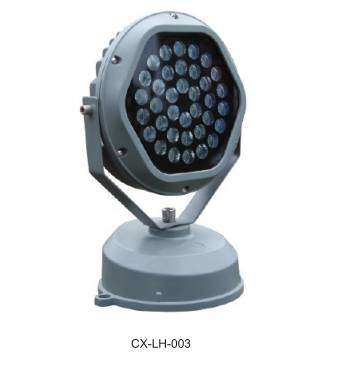
Description of products
1. Fashionable, modern appearance design, make lamps and lanterns also become a work of art, with the environment perfect union.
2. The main material of the luminaire is made of high strength die-casting aluminum material, and the surface anti-aging electrostatic spraying process, Self-cleaning and anti-corrosive.
3. Tempered glass cover with high strength and impact resistance.
4. The lamp can be configured white or monochromatic RGB, gorgeous lighting effects, color purity, powerful change.
5. The lamp body is made of high - die cast aluminum material, surface electrostatic spraying
6. The unique rotatable fixed bolt can be rotated 360 degrees.
7. The light source adopts 1W single RGB light source, LED combination optical arrangement, and the mixing effect is better.
8. The light can be controlled by DMX512, a powerful function of changes in lighting effects.
9.Lamp series, power can be between 18W-36W, can be used for a variety of applications.
Product Size
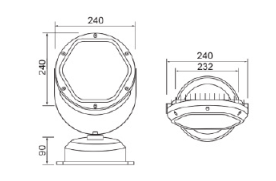
Product show

Installation Instruction
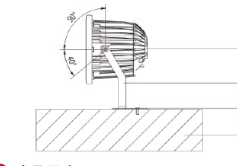
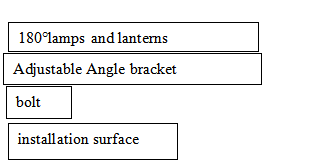
Led Tile Slots Lamp,Led Project Lamp,Led Night Lamp,Led Mood Lamp
Jiangsu chengxu Electric Group Co., Ltd , https://www.satislighting.com
